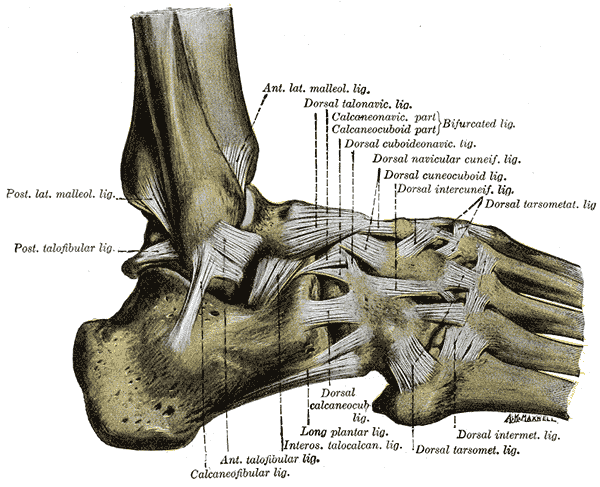Ottawa ankle rules
Editor-In-Chief: C. Michael Gibson, M.S., M.D. [1]

Overview
In medicine, the Ottawa ankle rules are a set of guidelines for doctors to aid them in deciding if a patient with foot or ankle pain should be offered X-rays to diagnose a possible bone fracture. Before the introduction of the rules most patients with ankle injuries would have been X-rayed. However only about 15% of X-rays were positive for fracture, other patients had sprains or other injuries. As a result many unnecessary X-rays were taken, which was costly, time consuming and a possible health risk.
Historical Perspective
The Ottawa ankle rules were developed by a team at the department of emergency medicine in Ottawa, Canada.[1] Since the rules were formulated in Ottawa they were dubbed the Ottawa ankle rules by its creators a few years after their development, a title that has stuck.[2] In this respect, the naming of the rules is similar to a widely used assessment of mental status, the Glasgow Coma Scale (GCS), which also takes its name from the city in which it was created.
The Ottawa Ankle Rules
X-rays are only required if there is bony pain in the malleolar or midfoot area, and any one of the following:
- Bone tenderness along the distal 6 cm of the posterior edge of the tibia or tip of the medial malleolus
- Bone tenderness along the distal 6 cm of the posterior edge of the fibula or tip of the lateral malleolus
- Bone tenderness at the base of the fifth metatarsal (for foot injuries).
- Bone tenderness at the navicular bone (for foot injuries).
- An inability to bear weight both immediately and in the emergency department for four steps.
Certain groups are excluded, in particular children (under the age of 18), pregnant women, and those with diminished ability to follow the test (for example due to head injury or intoxication).
Utility of the Ottawa Rules
The rules have been found to have a very low rate of false negatives. In the original research reported that the test was 100% sensitive and reduced the number of ankle X-rays by about 35%.[1] A second trial with a larger number of patients confirmed these findings.[2] Subsequently, a multi-center study was done that explored the feasibility of implementing the rules on a wider scale.[3]
Generalization to Other Joints
The original rules were developed for ankle and foot injuries only, but similar guidelines have been developed for other injuries such as the knees.
References
- ↑ 1.0 1.1 Stiell IG, Greenberg GH, McKnight RD, Nair RC, McDowell I, Worthington JR. A study to develop clinical decision rules for the use of radiography in acute ankle injuries. Ann Emerg Med. 1992 Apr;21(4):384-90. PMID 1554175.
- ↑ 2.0 2.1 Stiell IG, McKnight RD, Greenberg GH, McDowell I, Nair RC, Wells GA, Johns C, Worthington JR. Implementation of the Ottawa ankle rules. JAMA. 1994 Mar 16;271(11):827-32. PMID 8114236.
- ↑ Stiell I, Wells G, Laupacis A, Brison R, Verbeek R, Vandemheen K, Naylor CD. Multicentre trial to introduce the Ottawa ankle rules for use of radiography in acute ankle injuries. Multicentre Ankle Rule Study Group. BMJ. 1995 Sep 2;311(7005):594-7. PMID 7663253. Full Text.